Highlights May 1966
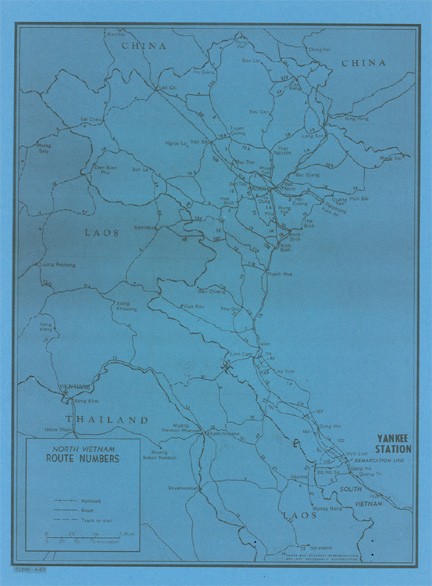
The political situation in the Republic of Vietnam began to deteriorate again in early May, precipitated largely by a 7 May news conference in which Premier KY stated his expectation to remain in office for another year. His political timetable, he said, called for an election of a Constituent Assembly in September and a National Assembly plus a civilian government in 1967. The Buddhist and "Struggle Group" labeled this plan unacceptable and renewed their demand for the immediate ouster of the KY government.
In the early morning of 15 May, KY moved against the dissidents in Danang to restore order. After limited fighting, the "Struggle" forces surrendered or fled the city on 23 May, and Danang remained quiet for the remainder of the month.
In Hue, however, the mood of demonstrators became increasingly anti-American, and on 26 May the USIS Library was attacked and burned. In Saigon and elsewhere, the situation remained tense but under control.
The Navy flew more than 8,000 combat sorties during May, losing nine aircraft and two pilots. The Marines had fewer air targets than usual, because the enemy's Main Force elements were reluctant to be engaged.
On 15 May, USS INTREPID (CVS 11) with an attack airwing aboard instead of her usual carrier antisubmarine air group, arrived at DIXIE Station south of Saigon to provide support to friendly forces and become initiated into the SEASIA conflict.
Pilots reported that the enemy's AA fire was still a bigger gun than SAM. However, by the end of May there were over 100 of the latter whose pattern had moved south to provide almost solid cover of the coastal area to the 18th parallel.
In the air war, there were further indications that MIG 21 aircraft were now in North Vietnam. At any rate, defensive strength in the air appeared to be increasing with 38 MIG warnings and 141 SAM alarms being sounded by BIG LOOK aircraft.
An evaluation by medical officers of the incidence of fatigue in aircrews at YANKEE Station revealed the following: Operational performance and morale were outstanding with the effect of fatigue only slight. Morale, however, is threatened by short periods in home ports, prolonged family separations, dissatisfaction with targets, lack of national support and recognition, and physical fatigue. Recommendations were to utilize all CVAs and Air Wings and limit combat deployments to two per pilot or crewman.
Naval Gunfire Support was provided by a variety of SEVENTH Fleet ships consisting of 2 cruisers, 17 destroyers, 1 inshore fire support ship and 1 medium landing ship rocket. The latter two ships were especially active with their rapid firing five-inch rocket batteries against more than 900 targets, destroying over 1200 structures.
MARKET TIME forces had a busy month detecting or inspecting over 40,000 wood and steel-hulled craft. One highlight was the destruction of a Communist trawler smuggling arms to the VC on the Ca Mau peninsula. Operation TEE SHOT V and a PCF rescue of 157 South Vietnamese from a sinking freighter were others.
Three PACVs arrived at Cat Lo for MARKET TIME evaluation. SWIFTs in South Vietnam stood at 48 by the end of the month, plus five DERs, six MSOs and two MSCs. Also, at various times in May, CTF 115 had operational control of 23 other SEVENTH Fleet ships.
Plans continued for harbor defense units at Danang, Qui Nhon, Nha Trang, Cam Ranh Bay and Vung Tau. Each will eventually have the mission of defending assigned land and water areas against attacks by small surface craft, sabotage, underwater swimmers, and enemy mine laying operations.
Operation GAME WARDEN continued in the Rung Sat Special Zone and expanded into the Mekong Delta. Viet Cong mining activity again emerged as a real threat, when VC infiltrating a secure port, were able to inflict serious damage on a merchant ship at anchor.
The Marines conducted 13 large unit operations designed to engage the VC Main Force, to expand Marine influence beyond the III MAF tactical areas, and continue consolidation of the I Corps shore region.
MAF conclusions in May, were that the enemy was suffering, but was still formidable since he still had access to food and supplies.
COMUSMACV pointed out that infiltration for the first third of this year totalled approximately 20,000 men, compared with 19 to 20,000 for all 1965.
During the month, there were 645 UNREPS by Service Force ships, with 189 at night. A total of 77 VERTREPS were also made, lifting over a million short tons. NAVASOTA (AO 106), the first jumboized oiler, completed a 267 day deployment in WESTPAC and provided nearly a million and a half barrels of POL products to customer ships.
In the area of supply, CINCPAC continued to control all ammunition stocks in the Pacific Command. This was caused by shortages of air munitions in the Air Force. As a result, stocks were shifted around and new allocations made for each service, including the VNAF.
As Flag Pole items, CINCPACFLT listed serious shortages in UH-IE aircraft, five-inch AAC/HC ammunition, money for aircraft O&R and survival radios. Flag Pole is a device to obtain the attention of higher authority to serious shortages.
In the area of communications, CNO directed the activation of an interim four-channel broadcast in EASTPAC and a full eight-channel broadcast in WESTPAC, to eliminate the backlog of messages. Another step to improve this situation was made by NAVCOMMSTA Philippines in screening out 1400 duplicate messages from the WESTPAC Fleet Broadcast during May. Finally, at a Satellite Communications Conference, plans were discussed for the use of standard operating procedures to ensure effective use of satellite resources.
Within NAVFORV, COMNAVSUPPACTS Danang was assigned additional duty as COMNAVFOREP on 1 May. Action was also initiated to establish a COMFAIRWINGWESTPACREP in Vietnam to coordinate the aviation logistic effort.
Effective 17 May, HSA, Saigon was disestablished, drawing to a close the final chapter of an organization that at one time was the Navy's largest overseas activity. Simultaneously, NSA, Saigon was established to assure that Naval Forces in the II, III, and IV Corps areas were provided with proper support.
In the Vietnamese Navy, the reorganization which neared completion in April, came to a virtual standstill during May. The problem was political and centered around a possible large scale turnover of the top jobs within the service. Naval operations in the I Coastal Zone were also hampered since some of the Coastal groups became short of food and fuel, as their junks were unable to go into Danang for resupply.
The VNMC, in spite of the political problems, was able to maintain high morale and esprit de corps, which accounts for their effectiveness as security and riot control forces.
During May, the greater part of the naval PSYWAR and Civic Action was administered by the Vietnamese Navy Psychological Warfare Bureau and its U.S. advisors. Over 11 tons of material was received from CARE, Catholic Relief and USAID.
At Danang, the emphasis was placed on medical civic action. Sick Call was held twice in the Da Man village, and each Monday at facilities made available by the Sacred Heart Convent.
In other activities, personnel assisted in cleaning up debris after the political struggles were over, and the Seabees and Marines, always active in Civic Action efforts, continued with their programs to win over the people.
In the area of Intelligence, it was reported that some 83,000 tons of cargo were delivered to North Vietnam by 25 foreign ships during May. This can be compared with 75,800 tons aboard 19 ships in April.
More evidence appeared of Viet Cong using Cambodian territory, and insurgency operations in Thailand were marked by the first terrorist combat operation against regular Royal Thai Army personnel. The ratio of Communist to security forces killed in action in Thailand, however, still stands at 4 to 1.
By the end of the month, Premier KY was in a stronger position of leadership than he was when he first directed his forces against the rebels in the I Corps area. The CHICOMS had detonated their third nuclear explosion amidst the rumors of a behind-the-scene power struggle. No signs of peace were apparent anywhere, and the doves and hawks continued their debates. For the principals, however, the war continued as fiercely as before, with June ushering in heavy bombings of North Vietnam's POL industry, increased air-to-air engagements and enemy surface-to-air missile firings.
The Navy flew 8092 attack and combat support sorties during May and lost 9 aircraft and two pilots. Forty-five other aircraft received damage but made it back to homeplate. Overall attrition was .16% for all air operations compared with .21% for April. Waterborne targets continued to provide good hunting as well as supply centers and LOC hubs. Spectacular success was achieved against POL products in storage areas and railroad equipment, but the general trend was to destroy anything related to the infiltration of people and supplies into South Vietnam.
USS INTREPID (CVS 11) arrived at DIXIE Station on 15 May to relieve HANCOCK (CVA 19) there and mark her first defense. This, however, was not an immediate problem for INTREPID, who set herself to the task of providing direct air support for amphibious and helicopter vertical assaults, as well as attacks on troop concentrations, fortifications, trucks, boats and various other targets as called for by friendly forces ashore. For example, between 18 and 24 May, INTREPID flew 630 sorties.
The enemy's accurate and intense AA fire was as good as usual in May and our pilots were always respectful of it. They also respected the enemy's SAMs, but with proper warning could usually hope to evade them. An example of this occurred on one occasion when eight SAMs were fired at a flight of two F-4s. Both aircraft escaped.
Photo reconnaissance to support the strikes from YANKEE Station over North Vietnam was conducted by RA-5C and RF-8A aircraft aboard the CVAs and by detachments of RA-3Bs, usually located at Cubi Point. To gather this kind of intelligence, aircraft flew nearly 150 sorties in May. High, straight and level flying was affected, however, by the gradual southward expansion of missile sites, which by the end of May were more than 100.
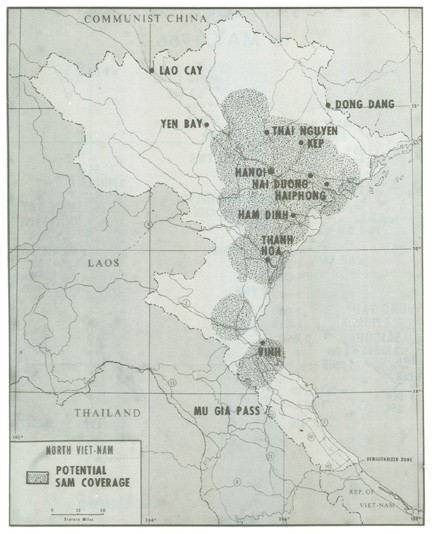
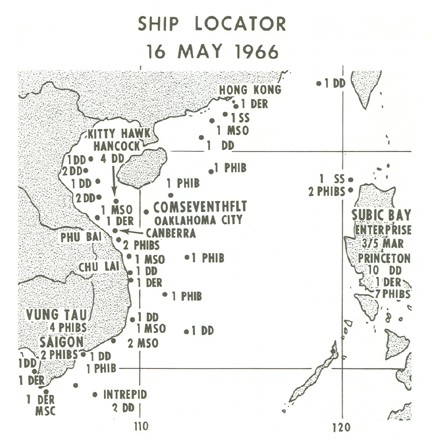
In May, the number of Marine fixed wing sorties decreased slightly from April's total: 4,074 in May vs 5,107 in April. Caused partly by bad weather over Laos and North Vietnam, the decrease was most evident in the reduced number of sorties flown in support of III MAF who experienced difficulty in forcing the Main Force of the enemy to come out and fight.
During these sorties, Marines lost 11 strike aircraft to ground fire -- 9 in RVN and 2 in Laos. Effective SAR operations, however, rescued 12 of the 14 pilots and crew who had been shot down.
Marine helicopter sorties during the month were 36,790 which is about 6% less than April's figure, but still considerably more than any other previous month. Some 4800 of these sorties were flown in support of ARVN forces and another 211 were rescue sorties to pick up downed aviators in RVN, Laos and NVN. The helicopters lifted 54,467 passengers and evacuated 1898 wounded. Only one helicopter was lost to enemy ground fire during May, but another 88 were hit.
Naval Gunfire Support was provided for U.S. Army Operation LEXINGTON and Marine Operations MOBILE and OSAGE by a variety of SEVENTH Fleet ships consisting of two cruisers, 17 destroyers, one inshore fire support ship and one medium landing ship rocket. The latter two ships, CARRONADE (IFS 1) and ST. FRANCIS RIVER (LSMR 525) respectively, were especially active with their rapid-firing five-inch rocket batteries. Together, they fired on more than 900 targets which resulted in the destruction of 1212 structures and the damage of over 1200 others.
Versatility, of course, is the hallmark of Navy gunfire, and this was demonstrated many times during May. On one occasion, MORTON (DD 948) was 17 miles away when she received a call from an Army RANGER unit that was receiving harassing fire from automatic weapons and mortars. She responded with a high speed run to the vicinity of the target, fired illumination rounds to where the fire was coming from, and the RANGERS were able to take care of the rest. On another occasion, MORTON combined with CARRONADE to provide not only 5"/54, 5"/38, 3"/50, and 40mm guns, but also long and short range rockets as well.
ST. FRANCIS RIVER demonstrated her versatility by effectively taking three targets under fire simultaneously, using split launcher combinations. CARRONADE, in support of Operation MOBILE, saturated a helicopter landing zone with a thousand five-inch rockets within a ten minute period of time. Once, ROGERS (DD 876), while continuing to fire her forward mount, was rearmed aft by a helicopter from SACRAMENTO (AOE 1).
In nearly every case when Navy gunfire was requested in May, the fire was of pinpoint accuracy, or else it provided broad area coverage when this was desired. Over 30,000 rounds of all caliber ammunition were fired in target areas during the month, compared with 345 rounds during May 1965. Damage assessment, however, was not always easy because of the dense clouds of black smoke that usually accompanied the fires in the target area. Nevertheless, there was no doubt about the sledge hammer arsenal that these Navy ships were adding to the war.
In addition to increasing patrols as new units arrived in country, May provided the highlight of 15 months of MARKET TIME operations when a Communist trawler was run aground and destroyed near the southern tip of the Ca Mau peninsula. Also, during May, MARKET TIME Units participated in the special operation, TEE SHOT V and on several occasions rendered support to friendly ground forces and to Coastal Groups on patrol. As usual, assistance was given to friendly fishermen in need, and on one occasion 157 persons were saved from a sinking freighter and transported to safety.
The overall readiness of the Navy and Coast Guard units of Task Force 115 was excellent, and the six PCFs that arrived during the month, plus the establishment of a Mobile Inshore Undersea Warfare Surveillance (MIUWS) unit at Vung Tau, further increased the total capabilities of the Surveillance Force.
(1) POINT GREY and TRAWLER Incident
USCGC POINT GREY, after becoming suspicious of two large bonfires just north of the mouth of the Rach Gia River, made a radar contact with a steel hulled trawler in the early hours of 10 May. Failing to receive a reply to her challenge, POINT GREY continued to track and made her report to the Coastal Surveillance Center at An Thoi. The trawler, sailing westerly at 10 knots when detected, shifted to various courses
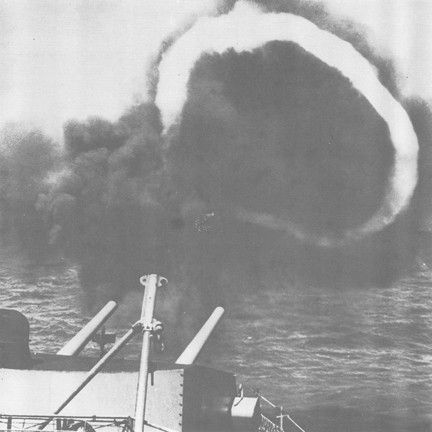
and speeds in a northwest direction. At about 0200, the trawler hove to and remained dead in the water offshore from the bonfires. As the trawler drifted toward the shore, POINT GREY challenged her again. Still, there was no reply. Three or four persons were seen briefly when the Coast Guard cutter illuminated the area, but the rest of the crew remained out of sight.
At about 0500 the trawler was approaching restricted waters, and at daybreak it appeared to be aground and deserted. When a boarding was attempted, however, the suspicious nature of the incident was confirmed by intense fire from the mangroves that forced POINT GREY to withdraw and await assistance.
This was provided by BRISTER (DER327), VIREO (MSC205), USCGC POINT CYPRESS, units of the VNN and Navy aircraft, but when another boarding was attempted by POINT GREY, she again received intense fire from the shore, this time wounding three men on her bow. Therefore, since it appeared that salvage would not be possible before dark, the decision was made to destroy the trawler to prevent the Viet Cong from taking off the supplies. This was accomplished, and the trawler was broken into two sections, both listing heavily to port.
Salvage operations recovered six crew-served weapons, approximately fifteen tons of ammunition, movie projectors, film and other propaganda material. Communication and navigation equipment, including ship's logs, charts, and some other records were not recoverable since they had been destroyed with the trawler. Nameplates removed from the ship's machinery indicated that most of this was manufacture in East Germany in 1964. A few nameplates were in French and Chinese. Printed materials included both propaganda and training manuals. (See appendix)
An analysis of the ordnance recovered revealed that the 120mm mortar ammunition taken off the trawler had only been found once before in South Vietnam and never in the Mekong Delta. Along with some 12.7mm API ammunition found aboard it had been manufactured in Communist China as recently as 1965. This indicated that the VC might be becoming short of ammunition because of the recent date on itl or that the Communist supply system was extremely efficient. Possibly it indicated both.
From aerial photographs, it was determined that the trawler was approximately 110 feet long and 22 feet in beam. It had two hatchesl a blue-grey hull and a white bridge superstructure. There were no flags or identi!ication markings on the hull. In general the features of this trawler were similar to those of the trawler intercepted by HISSEM (DER400) on 31 December 1965. This trawler had appeared to be making an attempt to infiltrate the southwestern tip of the Ca Mau peninsula, but changed her plans when followed closely by HISSEM. She was subsequently tracked into CHICOM waters. Also, both ships were similar to the arms-carrier destroyed at Vung Ro Bay in February 1965. Piecing the actions of this trawler together with reports of others, it was believed that a route trawlers frequently follow is to sail east from Haiphong through the Hainan Strait, south through the South China Sea, and then west to the Ca Mau Peninsula.
(2) TEE SHOT V
The TEE SH04 concentrated patrol concept was employed once during May in support of Operation DAVY CROCKETT II in the northern section of Binh Dinh Province. It was established in the coastal area from Dong Phu village south to Chanh Oai village to detect and capture or destroy any hostile craft attempting to exfiltrate the area.
Participating U.S. units included USS FALGOUT (DER324), and two PCFs from Division 104 at Cam Ranh Bay. FALGOUT provided logistic support for the two PCFs as well as berthing for two spare PCF crews. Participation of Coastal Groups 21 and 22 was requested through Vietnamese Navy Headquarters. In addition, MARKET TIME patrol aircraft were directed to give special emphasis to this area and report immediately all contacts to the nearest surface unit.
FALGOUT commenced patrol in the TEE SHOT V area the morning of 5 May. Liaison was established with Coastal Groups 21 and 22 that afternoon.
On 7 May at 1105, PCF42 came under fire from the beach. The forward turret gunner was hit on the flak jacket by small arms fire, incurring superficial wounds to the face and arms. Lt the time, USS AGERHOLM (DD826) was in the area on NGFS station approximately 800 yards away from the incident, and the wounded man was transferred to her for treatment.
TEE SHOT V was terminated the morning of 13 May. During the operation a total of 2,448 junks were detected, 1,210
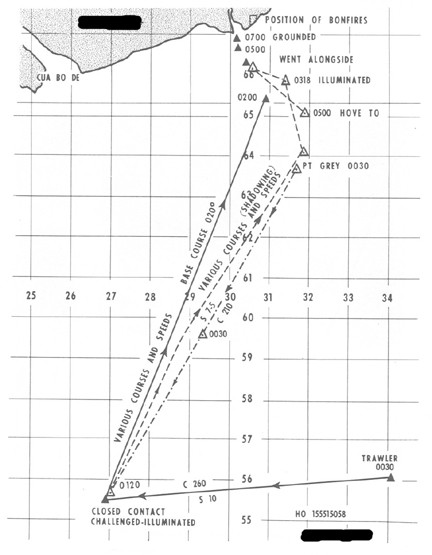

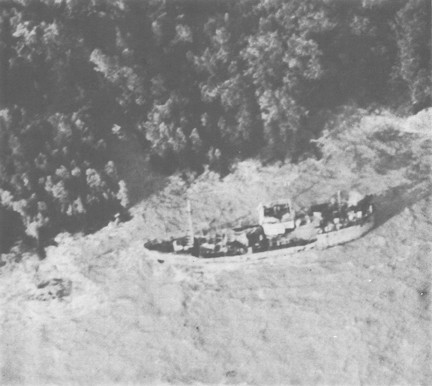
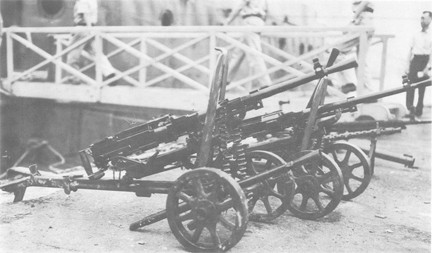
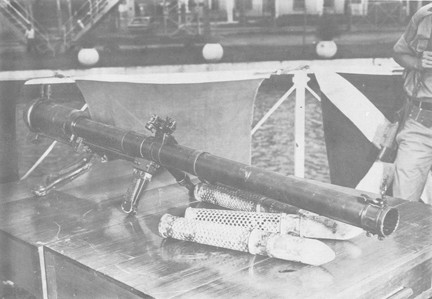
inspected and 484 boarded. Twenty-three persons and six junks with a total of seventeen tons of salt were apprehended and delivered to VNN authorities. No exfiltration was detected or believed to have been attempted.
(3) MARKET TIME Units
Three Patrol Air Cushion Vehicles (PACV) arrived at Vung Tau on 1 May to form PACV Division 107 and on 2 May proceeded to the MARKET TIME base at Cat Lo, thus introducing this type craft for the first time into a combat zone. During the rest of the month, maintenance and logistic support equipment was set up and the PACVs were prepared for operations.
In aerial surveillance operations, USS SALISBURY SOUND (AV 13) with CTF 72 embarked, arrived at Cam Ranh Bay on 15 May, set up a seadrome and activated Task Group 72.5. SP-5B aircraft immediately began flying patrols from the seadrome in support of MARKET TIME. Patrol Squadrons 40 and 48 had aircraft detachments at Cam Ranh Bay supported by SALISBURY SOUND for the remainder of the month. Fifty-two MARKET TIME flights were flown by TG 72.5 during this period. The aircraft on patrol investigated contacts for MARKET TIME ships and reported all contacts and suspicious activity discovered. A detachment of seven SP-2 aircraft from Patrol Squadron TWO relieved Patrol Squadron ONE as TG 115.6 on 29 May. They were based at Tan Son Nhut Air Base at Saigon and flew in support of MARKET TIME operations.
Twenty-six Coast Guard cutters remained on MARKET TIME patrol during May in addition to five DERs, six MSOs and two MSCs. Twenty-three other SEVENTH Fleet units were under CTF 115's operational control. For a statistical summary of MARKET TIME activity and a compilation of contraband material captured by U.S. and VNN MARKET TIME Units, see Appendixes.
(4) Harbor Defense
In January 1966 a harbor defense team composed of representatives from CINCPACFLT, NAVADVGRP, COMINPAC and COMIUWGRUONE visited the major coastal ports in the Republic of Vietnam to determine harbor defense requirements. The ports visited included Danang, Qui Nhon, Nha Trang, Cam Ranh Bay and Vung Tau/Cat Lo. Based on the findings of the team, a harbor defense plan has been prepared for Vung Tau and is being prepared for each of the other ports.
The plans provide for a harbor defense unit at each location. The units will have the mission of detecting and defending assigned land areas, water areas and water approaches against small surface craft attack, intrusion by deception craft, sabotage by sneak attack, underwater swimmers or subversive personnel and enemy mine laying operations. A Harbor Entrance Control Post will serve as the command center for each unit. Radar search, visual search and searchlight sections will provide surveillance, while surface craft are to provide harbor and entrance patrols and investigation and prosecution of suspect contacts.
The establishment of the harbor defense units will be in three phases. In Phase I, Mobile Inshore Undersea Warfare Surveillance Units (MIUWS) consisting of five officers and fifty-four enlisted men will be deployed to each of the sites. The MIUWS Units will establish an interim harbor defense capability utilizing equipment and personnel assigned. Phase II is the semi-permanent step in establishing this defense. Advanced Base Functional Components will phase out the MIUWS equipment and newly arriving personnel, after receiving on-the-job training.
Phase III will consist of a completely staffed and equipped harbor defense unit. Permanent structures will be completed and all facilities will be operational.
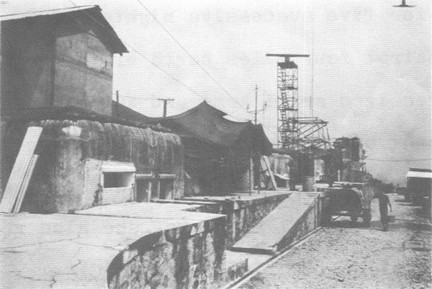
River Patrol Force
Operation GAME WARDEN expanded during May as the first river patrol units moved into the Mekong Delta. Activity continued in the Rung Sat Special Zone where patrols continued to interdict Viet Cong movement while U.S. Army Operation LEXINGTON III destroyed numerous enemy facilities. Viet Cong mining activities re-emerged as a very real threat in an incident at the Nha Be anchorage.
On the afternoon of 18 May, Captain B. B. WITHAM, Jr., USN assumed command of the River Patrol Force. Ceremonies were held at the GAME WARDEN base at Nha Be.
(1) Rung Sat Special Zone Activities
Heavy Viet Cong harrassment of U.S. patrol units on the Soirap River north of the entrance to the Vam Co River took place during the early days of May, a continuation of similar events during April. Starting the evening of 30 April and continuing for five successive nights, USCGC POINT PARTRIDGE, on patrol four miles north of the entrance to the Vam Co River, received small arms and automatic weapons fire from the west bank of the Soirap River. On each occasion POINT PARTRIDGE returned the fire with her .50 caliber machine guns and 81mm mortar. On 1 and 3 May she also received assistance from helicopter fire teams.
On 5 May, POINT PARTRIDGE engaged a single sampan near to this location crossing the Soirap from east to west. The occupants, estimated at four, were forced to abandon their vessel which POINT PARTRIDGE then took in tow. On board were found. two Chinese Communist carbines, each with seven rounds of 7.62 ammunition. The principal cargo, however, was a large quantity of 16 foot pointed bamboo stakes, evaluated as anti-helicopter poles. Also recovered were 50 five gallon water drums and some personal papers.
Contrary to presumed Viet Cong movement tactics, this incident took place at low tide under a full moon. Previous studies of tactics reveal that the Viet Cong usually take advantage of the dark phases of the moon and high tide to move their supplies.
During May, the helicopter fire teams, operating from TORTUGA accounted for four Viet Cong killed, four sampans destroyed, 19 sampans damaged and five Viet Cong structures destroyed. They flew 31 armed reconnaissance missions, 25 rapid reaction missions, sixteen escort missions and seven medical evacuation missions. For a GAME WARDEN statistical summary, see Appendix.
(2) Loss of PCF 41
On 22 May, while on patrol in the RSSZ in support of U.S. Army Operation LEXINGTON III, PCF 41 came under fire from a heavy caliber weapon on the east bank of the Dinh Ba River. A hit was sustained in the lower half of the starboard bulkhead of the pilot house, killing the coxswain, wounding the radioman and destroying most of the equipment in the pilot house. Within seconds of the initial hit, a mine exploded adjacent to the PCF, resulting in possible bottom damage. PCF 41 returned the fire and accelerated at maximum speed. However, steering control had been lost, and the boat ran aground before control could be regained.
Due to location of the craft in VC territory, impending darkness, lack of radio communications, and an outgoing tide, PCF 41 was abandoned after jettisoning the after .50 caliber machine gun, the URC-58 radio and some of the ammunition. The life raft was then launched and the crew, equipped with small arms, proceeded southeast until picked up by PCF 37. The one wounded man was then transferred to Dong Hoa Village for helicopter medical evacuation. The remainder of the crew was taken to Vung Tau for treatment of shock and minor injuries.
A Reaction Force was then ordered into the area to prevent any Viet Cong attempts to strip PCF 41. They removed the one body along with the forward .50 caliber machine guns, the starlight scope and the remaining ammunition. An incendiary grenade was used in an attempt to render the mortar useless. They then tried to tow the PCF from the sand bar where it had grounded, but severe bottom damage caused it to sink in midstream in about twenty-five feet of water. This was the second PCF lost to enemy action.
(3) LEXINGTON III
Operation LEXINGTON III, a U.S. Army search and destroy operation in the RSSZ, took place between 21 May and 9 June. Both U.S. Navy and Vietnamese Navy units played an active part with some units lifting weapons and other supplies to specified locations, while others played vital roles in amphibious landings. Still others provided diversion tactics. GAME WARDEN units conducted anti-infiltration/exfiltration patrols with their eight PBRs and three PCFs, and Navy SEAL teams conducted several ambushes.
LEXINGTON III accounted for 35 VC killed. Thirty weapons were captured, and numerous base camps and fortified positions were destroyed. Also sunk or destroyed were 29 sampans. Only one friendly was KIA and four wounded.
(4) Minings at Nha Be
The ability of the Viet Cong to infiltrate a secure port and inflict serious damage on shipping was confirmed on the morning of 26 May. At 0150 a loud explosion resounded through the Nha Be anchorage followed by a series of distress signals from a ship's fog horn. The GAME WARDEN base at Nha Be immediately went to general quarters, and PBRs and units of VNN RAG 22 were sent to investigate.
The PBRs reported that the ship EASTERN MARINER, of Panamanian registry and carrying a cargo of 4000 tons of bagged cement, was settling by the stern with a slight starboard list. Twelve feet of freeboard was remaining and the crew was abandoning ship. The PBRs and RAG 22 units rescued the crew and brought them to Nha Be., There were no casualties.
Divers revealed a twelve foot by ten foot hole in the starboard quarter and recovered remnants of nylon cord, indicating that a mine had been attached to the ship.
On the same morning a tugboat reported to the MSTS Office, Nha Be, that a second explosion had occurred near another ship anchored about 350 yards from EASTERN MARINER. Investigation revealed no damage, but examination of her anchor chain showed an attached nylon cord, evaluated as having been used to affix a mine.
On another ship a mine attached to the anchor chain was discovered and removed in time. It contained about 130 pounds of TNT rigged to be electrically detonated by a double timing device attached to the mine. EOD personnel reported it was attached to the anchor chain by metal hooks and nylon parachute cord which allowed the mine to drift back under the ship with the current.
The one successful mining and two attempted minings prompted a quick re-evaluation of the anchorage security requirements for Nha Be, and all ships were advised not to heave around on their chains or turn their screws until they had received an underwater inspection.
(5) Mekong Delta Activities
The first operational test of the GAME WARDEN concept in the Mekong Delta commenced on 8 May near Can Tho. Upon arrival there, the PBRs underwent a week of area familiarization and training. On 15 May two PBRs were distributing leaflets describing new curfew hours on the Bassac River when they received automatic weapons fire at a point 15 miles southwest of Can Tho. They cleared the area with no casualties or damage. However, on the return trip they again came under heavy, constant automatic weapons fire that wounded two crewmen and lightly damaged both PBRs. Fish traps across the river had forced them to a position close to shore and increased their vulnerability.
On 17 May, in their first night action, PBRs had a similar experience, which was repeated several times during the month. The use of heavy shore fire to cover the transport of supplies across rivers was a familiar tactic, but these incidents were the first involving U.S. patrol boats on the Mekong Delta waterways.
(6) PBRs
The addition of 16 PBRs during May brought the total of the boats in country to 47. However, the rapid tempo of operations in the RSSZ during May taxed both the crews and their boats. PBRs ran twelve hour patrols with an additional two to three hours spent transiting to and from patrol areas. In addition, most River Patrol Sections were required to perform their own maintenance.
Operations from the LST and LSD interim support ships showed that a high order of seamanship was required to prevent damage to the PBRs when moderate seas were running.
Three problem areas came to light in the PBRs themselves during the month. Numerous pump drive shaft casualties were experienced. Surface corrosion occurred on pump grill inserts and pump suction pieces and on the seats for the impeller wear rings. The third problem was the inability of the PBRs to make their designed speed of twenty-five knots, probably due to excessive weight. Naval Ship Systems Command was asked to make an investigation.
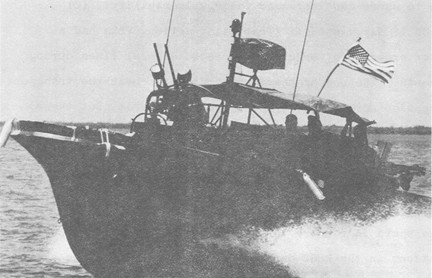
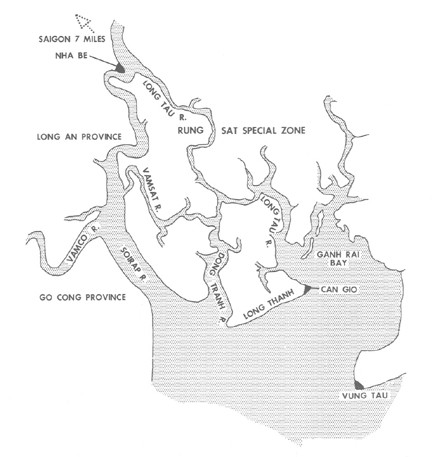
Naval Advisory Group
The reorganization of the Vietnamese Navy which neared completion during April, came to a virtual standstill during May. The primary reasons for this were political in nature, centered around a possible large scale turnover of the top jobs within the service. Some higher ranking officers in VNN were sent to attache billets or to schools in the United States. The general climate throughout the month remained one of uncertainty, with most officers adopting a "wait and see" attitude. Fortunately, however, the effect of this show-down on actual operations was slight.
(1) Fleet Command
Vietnamese Fleet Command ships continued to assist U.S. MARKET TIME units in their coastal patrols, and to maintain patrols in the river areas. During the month, 34 gunfire support missions were fired, primarily in support of Regional and Popular Force outposts in the Mekong Delta and the Rung Sat Special Zone. In a typical action on 17 May, a Viet Cong company was reported moving on Dong Boa village in the Rung Sat Special Zone. A LSIL and a PGM arrived on the scene and bombarded the Viet Cong with heavy 40mm and 20mm fire, thwarting the attack. In action in the I Corps Tactical Zone, a PCE fired seventy rounds of 3" ammunition at Viet Cong outposts in the vicinity of Coastal Group 16. Three outposts were reported destroyed.
Continual stress on routine maintenance resulted in some improvement in shipboard practices. However, many officers still believed that their job was only to operate the ship and that the shipyard was responsible for maintenance. Personnel distribution practices, lack of experienced technicians, old ships and long lead time for spare parts all continued to add to maintenance problems.
(2) Coastal Zones and Coastal Groups
Naval operations in the First Coastal Zone (CZ) were hampered by the political unrest in the I Corps Tactical Zone. The primary problem was in the area of logistics. Some of the Coastal Groups were short of food and fuel during the month as their junks were unable to get into Danang for resupply. This situation was somewhat alleviated by Fleet Command ships delivering supplies from Nha Trang and other ports to the south.
Two significant actions during May in the Second CZ involved Coastal Groups and their advisors. On 14 May, a patrol from Coastal Group 21 detected a junk with nineteen people embarked, and as the patrol approached, several items were thrown over the side. Upon boarding, a medical kit and some documents were discovered. Interrogation revealed 12 of the 19 were Viet Cong and that they were fleeing U.S. forces engaged in DAVY CROCKETT. One was a sixteen year old girl serving as a nurse. They stated that when the Coastal Group 16 patrol approached, they had thrown six M-1 rifles and three boxes of ammunition over the side. All were turned over to Vietnamese authorities.
In the Third CZ three clandestine operations were conducted by the VNN. All displayed ingenuity and aggressiveness. On 1 May a Coastal Group 35 intelligence team disguised as civilians, raided a small band of Viet Cong at a position south of the CG 35 base. One Viet Cong was killed, one was injured, and several grenades and a flag were captured. On 5 May the Commanding Officer of Coastal Group 32 and five sailors, all dressed as fishermen and armed with sub-machine guns and carbines, embarked in three small sampans. Near Long Son Island they were approached by three Viet Cong tax collectors. The Viet Cong were taken under fire and all three were killed. On 16 May, Coastal Group 35, employing similar tactics, encountered nine Viet Cong in a sampan. Three Viet Cong were killed, the others escaped leaving their sampan behind with documents aboard.
(3) Riverine Areas and River Assault Groups
Operations in the Third Riverine Area during May centered in the Rung Sat Special Zone. Here as previously mentioned, units from RAG 22 participated in Operation LEXINGTON III. In addition, Regional Force operations were supported by RAG 22, often supplemented by boats from other RAGs . In addition, boats from RAGs were assigned to five sensitive areas near Saigon for patrols and support.
The River Assault Groups of the Fourth Riverine Area participated in a series of 18 highly successful operations in May. In most cases the transport of troops was entirely provided by the RAGs, and these stepped-up Riverine Operations appeared to be effective in carrying the war to the Viet Cong in the Mekong Delta.
(4) Vietnamese Marine Corps
Task Force ALPHA, composed of the second and fifth Vietnamese Marine Battalions and a Headquarters Detachment saw the only significant combat action during May. Operating under the control of the ARVN Second Infantry Division, they conducted a search and clear operation fourteen kilometers west of Quang Ngai from 9-13 May. On 15 May, the Task Force, less the Fifth Battalion, was airlifted to Danang to assist in controlling dissident elements and rebel forces in that city. There they were joined by the First Vietnamese Marine Battalion on the same day.
Despite the political crisis with its religious overtones, unit morale within the VNMC remained high, and loyalty to the government was unaffected. Proper leadership combined with esprit de corps and discipline, successfully countered any dissension which might otherwise have corne to the surface, and accounts for the loyalty and effectiveness of VNMC units employed as security and riot control forces.
There was a requirement for LARC-5 amphibian vehicles in Danang to provide in-the-stream discharge of ammunition and direct movement to dump areas over the beach. In this way, Danang City could be bypassed, eliminating the chance of an explosion in a populated area. USARV was temporarily meeting the Navy's need for these vehicles by lending them 35. There was need, however, for their return, and CNO was asked to provide both LARC-5s and personnel to meet this requirement.
Deficiencies in support for Pacific Fleet aviation units were blamed on reduction in funding of aviation stock levels from 1962 to 1964. Increases made in late fiscal '65 and '66 had run into increased lead-times in production, and the effect of the increases was not expected to be felt until January to March, 1967. Inadequate overhaul capacity for aeronautical components was seen as a continuing problem. Expanded in-house capacity and increased use of commercial overhaul were urgently required. Funds for fiscal '67 appeared to be adequate, but it was felt these funds should be available for obligation by July 1966 in order to prevent a worsening of the aviation supply support picture.
The first flight inaugurating the new CONUS to Cubi Point to Danang MAC channel departed Travis Air Force Base on 7 May with 14,156 pounds of cargo. During the remainder of the month, 23 MAC commercial charter and 17 MAC military flights lifted 1,361,473 pounds to Cubi and Danang.
WESTPAC ships were experiencing more frequent failure of diesel engine components, particularly in ships burning JP-5. JP-5 has a lower viscosity than DFM (diesel fuel, marine) and tends to loosen deposits in ship's fuel systems.
Another fuel problem occurred when the Navy Special Fuel Oil capability at NSD Subic was affected by a leak in the pipeline to Botan Annex Tank Farm. This temporarily denied use of a 130 MBBL storage area.
Due to a critical short supply of air munitions in the Air Force, CINCPAC had taken over complete control of all stocks in the Pacific Command. In a new allocation at the end of the month, he indicated a reduced availability of 250 and 500 pound bombs, fire bombs, ZUNIs, 2.75 inch rocket pods and paraflares. Similarly, CINCPAC published:
- Sortie allocations for the remainder of CY 66.
- Allocations of new production of air ordnance.
- Directions to transfer 3,835 ANM 65 bombs from PACFLT to the Air Force.
- Directions to transfer 2,180 complete and 224 incomplete MK 81 bombs from VNAF to PACFLT.
- Directions to transfer 3,058 ANM 81/88 frag bombs from PACFLT to VNAF.
SPCC Mechanicsburg suspended the majority of M173AL fire bomb fuzes and declared them unsafe for handling, movement, transportation and use. Since CTF 77 had restricted the use of the M157 firebomb fuzes for similar reasons, this virtually stopped the use of firebombs in Southeast Asia. Therefore, pending resolution of defects in production of the preferred M173AL fuze, the restriction on use of the M157 was lifted to provide a fire bomb capability.
Air munitions expended by SEVENTHFLT and Marine Forces during the month of May were as follows:
| ITEM | NAVY | MARINE |
| MK81 | 8432 | 3551 |
| MK82 | 7204 | 5062 |
| MK83 | 1098 | 786 |
| MK84 | 443 | 2 |
| M57/81/88 | 4836 | 3058 |
| M64 | 528 | 0 |
| M65 | 526 | 53 |
| M66 | 668 | 174 |
| MK77/79 | 714 | 601 |
| 5" ZUNI RKT | 4949 | 1800 |
| 2.75" RKT | 30,983 | 228 |
| MK24 | 754 | 576 |
| CBU2 | 25 | 0 |
| MK12 20MM | 142,472 | 89,921 |
| AGM12B | 56 | 0 |
| AGM12C | 53 | 0 |
| AGM45 | 23 | 0 |
During the month of May four items in critical supply were nominated as Flag Pole Items by CINCPACFLT. They were:
F-l--UH-1E aircraft
F-2--Five inch AAC/HC ammunition
F-3--Lack of funds to support aircraft O&R
F-4--Shortage of survival radios (S)
COMUSMACV, on 2 May recommended that immediate action be taken to withdraw the Army requirement for the use of USS TUTUILA (ARG 4). This was accomplished on 13 May when JCS authorized deployment of TUTUILA to the Pacific Fleet for MARKET TIME and SEVENTH Fleet use.
A careful review of CASREPS indicated a dangerous deterioration of Surface Missile System (SMS) readiness. The more obvious causes were the lack of repair parts. While steps were taken to improve this situation, COMSERVPAC proposed a series of visits to SMS ships by missile engineers to spot and correct weaknesses.
The ship repair workload at Ship Repair Facilities Subic, Yokosuka and Guam remained heavy due to Vietnamese operations. Activation of three YFNBs to provide interim GAME WARDEN base support was authorized by the Chief of Naval Operations.
Due to a material shortage, J-79 engines were being produced at Overhaul and Repair, NAS North Island without fuel nozzles. These engines were not usable by fleet activities and therefore not accepted into fleet custody. Spare ready-for-issue engine pools for this engine were very low.
Reactivation of SP-5B aircraft stored at NAS North Island was delayed indefinitely due to a shortage of funds. It was felt that commitments could be met by extending present aircraft if compliance with the current re-work schedule at St. Augustine, Florida was maintained and re-worked aircraft were fleet acceptable.
A Boeing/Vertol developed 100 per cent filter was tested on CH-46A aircraft in FIRST Marine Air Wing with satisfactory results. Engines showed negligible sand erosion after 260 sand landings. COMNAVAIRPAC requested procurement by the Naval Air Systems Command of similar filters for all WESTPAC CH-46 aircraft.
All twelve aircraft of VA-65 had cracks in the wing box section. Four aircraft received the Grumman fix in CONUS and have rejoined USS CONSTELLATION. Work on four more A-6As was started at NAS Atsugi. The remaining four A-6As were to be flown to NAS Atsugi for repair prior to arrival of CONSTELLATION in Yokosuka. These repairs were scheduled to be completed prior to the departure of CONSTELLATION from Yokosuka.
The Station Hospital, Danang had additional beds opened for patients. There were 228 operating beds at month's end.
The April review of hospital requirements for the Pacific Command determined that both the Navy and Army estimates of casualties for counter-insurgency warfare were too high. CINCPACFLT, in April, had revised the Navy estimates downward to 1.8 casualties per thousand/per day, based on the total Navy/Marine Corps in-country strength. Requirements would be met by using existing beds at Guam (326), Yokosuka (467) and USS REPOSE (750); and by new construction at Guam (900), Subic Bay (700), and USS SANCTUARY (750). This provided a total of 3,893 beds, with rapid expansion available at Subic and Guam.
The Assistant Fleet Medical Officer and two officers from COMNAVAIRPAC Staff visited YANKEE Station carriers from 9 May to 21 May to evaluate the incidence of fatigue in aircrews and other aero-medical factors affecting performance during combat operations. Among the conclusions drawn were:
- Operational performance of the SEVENTH Fleet pilots and aircrews was outstanding.
- Performance was only slightly degraded by the effects of "fatigue from long continuous operational periods.
- Morale among the aircrews was high and was maintained by unit identification, strong leadership and pride in performance. However, maintenance of morale was threatened by short period in home port and prolonged family separations, dissatisfaction with targets, lack of national support and recognition, and physical fatigue. Recommendations from this group were:
--To use all Navy carrier and airwing aviation units to allow longer periods between deployments.-- Limit WESTPAC combat deployments to a maximum of two per pilot or flight crewman.
USS CACAPON (AO 52) and USS FIREDRAKE (AE 14) participated in an unsuccessful search and rescue mission in the South China Sea from 26 to 29 May when four Navy crewmen bailed out of their aircraft during TYPHOON JUDY. Both ships were commended by COMNAVPHIL for their initiative and aggressive action.
NAVASOTA (AO 106), the first jumboized oiler, completed a 267 day deployment in SEVENTH Fleet during which a total of 1,435,400 barrels of POL products were pumped to customer ships.
While replenishing HANCOCK in the South China Sea on 26 May, SACRAMENTO (AOE 1) conducted VERTREP transfer of 27 lifts of provisions which contained 27.8 short tons in only 15 minutes. While replenishing ENTERPRISE, SACRAMENTO achieved a VERTREP transfer rate of 96.7 short tons of ordnance items in one hour.
During the month there were 645 UNREPS conducted, 189 of which were at night. A total of 77 VERTREPS were made consisting of 1,338 lifts with over a million short tons being carried.
CASREPS in WESTPAC were less in May than in April from Service Force ships even though the tempo of operations continued to increase. The casualties did not indicate any particular trouble spots.
USS TUTUILA (ARG 4) was permanently deployed in the Western Pacific to provide additional mobile repair capability to COMNAVFORV, and SEVENTH Fleet forces. The USS TUTUILA was transferred from the Atlantic Fleet to the Pacific Fleet. On 27 May, NMCB-3 arrived at Danang in support of the Marine complex there. Before their arrival the unit had been in Guam.
The first half of the month in South Vietnam renewed hopes that the worst had passed, and that KY, following a policy of reconciliation, had proved to any opposition that his government was effective and capable. The olive branch was quickly replaced by the sword on 15 May, however, when Premier KY, in the absence of Ambassador LODGE, sent troops to occupy the city of Danang. A virtual civil war was thereby unleashed as Struggle Forces, Buddhists, and dissident military leaders reacted to the government's use of force. In Danang, 1st Corps Commander General THI's successor, General DINH, was replaced by General CAO while the Mayor of Danang, MAN, sided with the Struggle Forces. In Hue, a dissident military triumvirate composed of Generals THI, DINH and NHUAN planned for the defense of the city against government forces. Riots and demonstrations plagued Saigon and the coastal cities as the Buddhist hierarchy, under rebellious Buddhist Thich Tri QUANG, urged Struggle Forces to action.
On the 23rd, the Struggle Forces in Danang surrendered and Mayor MAN was arrested. By the 28th, the government forces had restored order to the city. In Hue, the situation was ameliorated by the breakdown of rebel military leadership and the constant firmness of Hue's newly appointed Mayor, Colonel KHOA. With the weakening of Struggle movement opposition, moderate Buddhist leader Tam CHAU called for an end to the demonstrations, which by month's end had once again included the tactic of self immolation.
KY's government showed unprecedented resilience in the face of adversity, with KY succeeding where his predecessors had failed. Nonetheless, the opposition appeared as determined as was KY; and new acts of violence, intended to gain ethnic and U.S. support for a new government, appeared likely to continue.
In the ground war in Vietnam, MACV again increased his estimate of the total enemy combat strength from 89,805 to 93,305, including three divisional headquarters. In addition, MACV estimates that the current rate of infiltration for the first third of this year has totalled approximately 20,000, compared with a total of 19-20,000 for all of 1965.
Five EA-3B aircraft operating from NAS Cubi Pt. and CTF 77 carriers, and 2 VQ-l EC-12lM (Big Look) aircraft based at Danang Air Base continued to provide SAM/MIG alert warnings to PACOM strike/recce aircraft and furnished Task Force Commanders with tactical EOB. 141 SAM warnings and 38 MIG warnings were broadcast to strike/recce pilots by VQ-l EA-3B and EC-12lM (Big Look) aircraft. Two EC-12lM aircraft alternated flight operations and provided coverage from the normal Big Look Op-Area from approximately 0630H to 1830H.
Ho Chi MINH's birthday was 19 May. Commands were warned to be on the alert, but no unusual action occurred.
Constant air pressure on road and rail routes forced the Hanoi regime to emphasize the use of waterways in southern North Vietnam. Between 25 April and 4 May, over 850 river craft were destroyed between Than Hoa and Vinh.
In addition to waterways, construction proceeded on the new rail line between Thai Nguyen and Kep. Of interest was the indication that this new line will be of standard guage and therefore, compatible with CHICOM rolling stock.
In the air war, photo analysis has revealed the possibility of all-weather MIG-2l/Fishbed aircraft in North Vietnam. If confirmed, this would represent a significant new North Vietnam defense potential against hostile aircraft. An estimate of MIG aircraft in NVN and southern China is as follows:
| NVN | TOTAL |
| MIG-15/FAGOT | 50 |
MIG-17/FRESCO |
14 |
| IL-28/BEAGLE | 6 |
70 |
| SOUTH CHINA | |
MIG-15/FAGOT |
260 |
| MIG-19/FARMER | 155 |
| MIG-2l/FISHBED | 13 |
| IL-28/BEAGLE | 15 |
443 |
Also, of interest in North Vietnam was a POW report of CHICOM advisors having been in North Vietnam to inspect all the AA units in the Thanh Hoa area. They reportedly spoke fluent Vietnamese and had come to check the effectiveness of Chinese-provided guns. However, no CHICOM combat troops were believed to be in NVN.
Soviet merchant ships arriving in North Vietnam in May included 6 freighters and 3 tankers, two ships less than during April. Although the number of Soviet tanker arrivals this year has increased -- five more than this time last year -- only one tanker was enroute at month's end and no further POL ships were known to be scheduled. In addition to Soviet arrivals at North Vietnam, a Soviet freighter was sighted enroute carrying a deck cargo that included four crated MI-6 Hook helicopters. The Hooks, which were expected to be delivered to North Vietnam, were still aboard the ship on 26 May after departing Djakarta.
Peiping stated publicly that USSR shipped only 43,000 tons of military supplies to Vietnam by rail during last year and blames Moscow for not making full use of rail facilities. Soviet aid to Vietnam was called a sham and the USSR was accused of seeking world domination by collaborating with the U.S.
More than 83,000 tons of cargo were delivered to NVN by 25 foreign ship arrivals in May. This compared with 75,800 tons in April on 19 ships. The May increase probably resulted from more coal shipments by CHICOM ships, since coal had previously been delivered by rail. There were six Free World arrivals, one less than in April.
The detonation of a third nuclear shot and rumors of Mao Tse-TUNG's reappearance highlighted the month in Red China. It was estimated that the test was a low efficiency thermo-nuclear explosion but represented significant progress in the nuclear field.
Route development and truck traffic in Laos continued at a high level this month in an effort to complete pre-monsoon stockpiling activity. Extensive truck traffic was noted on some new routes which provided alternates to the Mu Gia Pass on the North Vietnam/Lao border.
Before leaving for "private discussions" in Moscow, King SAVANG of Laos gave a senior U.S. official in Vientiane his views on Southeast Asian problems and said he intended to seek a clearer definition of Soviet policy for Vietnam.
SAVANG apparently believes that the time is not yet proper for any Soviet initiative and that Moscow probably feels Hanoi needs to "suffer a little more." The King is of the opinion that only Moscow -- not Peiping -- can arrange a satisfactory solution. He is sure Hanoi has concluded that "Washington is not Paris" and that U.S. determination will endure.
Additional evidence of Viet Cong use of Cambodian territory was discovered this month. In the most overt demonstration to date, U.S. forces engaged in Operation BIRMINGHAM on the South Vietnamese/Cambodian border were brought under intense small arms fire from the Viet Cong on the Cambodian side of the border on 29 and 30 April. Examination of the area following the action disclosed that the Viet Cong had attempted to ambush U.S. units from positions prepared to deliver flanking fire inside the border.
Prince SIHANOUK of Cambodia stated during his 2-3 May economic work sessions that if the government was incapable of resolving the present economic crisis, it might be necessary to prepare for "the advent of Communism."
Insurgency operations in Thailand during May were marked by the first terrorist combat operation against regular Royal Thai Army personnel. An estimated eight terrorists killed two soldiers and wounded one in a raid on a small guard post in northern Ubon Province on 18 May. On the 20th, a patrol was ambushed twice about 45 miles east of Udorn Province. On the 27th, a similar bold act took place in Sakan Nakhon Province.
In spite of Communist aggressiveness, however, the Thai ratio of enemy to security force personnel killed in April, the latest complete reporting month, stands at 4 to 1 in favor of the government. The WIA ratio also has a favorable government ratio of 6 to 1. Nonetheless, reduction of terrorism in Thailand did not appear to be in the offing.
Finally, in early May, three long range Soviet BEARS conducted reconnaissance of TICONDEROGA while she was enroute home, and on 30 May, four BISONS conducted reconnaissance of CONSTELLATION while enroute to WESTPAC. Both groups were intercepted by carrier aircraft between 40 and 80 nautical miles out and escorted over their target. The last previous reconnaissance against a CVA was on 28 March against VALLEY FORGE.
In response to CINCPACFLT's request, CNO directed the activation of an interim four-channel broadcast in EASTPAC and a full eight-channel broadcast in WESTPAC on 15 May, more than 18 months in advance of the original CNO goal of 1 October 1967. This activation represented an important advance in Pacific Fleet communications by vastly increasing the capability of fleet broadcast.
At the request of CINCPACFLT, NAVCOMMSTA Philippines initiated manual procedures to screen duplicate messages from the WESTPAC Fleet Broadcasts, pending provision of automatic equipment to accomplish the task. It was reported that 1,400 duplicate messages were screened from the broadcast by this method in one month.
A Satellite Communications Conference, hosted by CINCPACFLT, was held during 16-18 May, for the purpose of discussing standard operating procedures to ensure effective utilization of present and future communications satellite resources. The presentations and discussions on future satellite employment will facilitate scheduling of assigned satellite time by the Navy Satellite Operations Center.
Commander Naval Support Activity, Danang was assigned additional duty as Commander Naval Forces, Vietnam Representative, Danang on 1 May 1966.
Actions were initiated to establish a Commander Fleet Air Wings Western Pacific Representative in Vietnam to coordinate the aviation logistic effort in Vietnam. It was planned that he would:
- Coordinate repair and removal of Navy and Marine Corps dud aircraft.
- Screen and forward requests for designated maintenance teams.
- Conduct surveillance of designated maintenance and management records.
- Conduct area screening for high priority aviation parts.
Effective 17 May, Headquarters Support Activity, Saigon was disestablished by authority of CNO and SECNAV. Thus drew to a close the final chapter of a relatively brief but busy and eventful history of what, at one time, was the U.S. Navy's largest overseas activity.
Headquarters Support Lctivity, Saigon was commissioned on 1 July 1962 with the specific mission of supporting the U.S. Military Assistance Command, Vietnam. Originally, this support was geared to the needs of some 9500 U.S. military advisors,
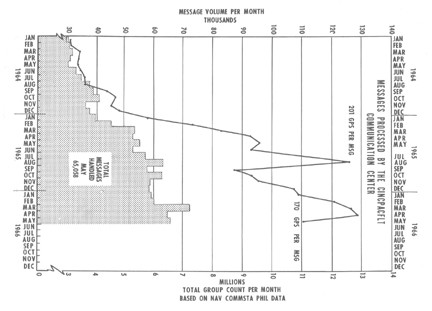
primarily around Saigon. As the role of the advisors expanded, the number of personnel and the locations to be supported by HEDSUPPACT also increased substantially. By mid-1964, CO, HEDSUPPACT Saigon was planning to support a build-up of U.S. forces in-country that was expected to reach 28,000.
Participation by U.S. forces in a combat role saw ever-increasing numbers of U.S. and Free World military personnel deployed to South Vietnam, and by August of 1965 more than 85,000 U.S. and allied troops at some 150 locations depended on HEDSUPPACT Saigon to meet many of their day-to-day needs.
A list of the more important facilities and services provided is as follows:
- Supply support involving some 50,000 requisitions per month.
- Procuring, storing and issuing foodstuffs and provisions needed by hundreds of military messes throughout Vietnam.
- Operation of the port of Saigon, which, during an average month, off-loaded over 205,000 measurement tons of military cargo.
- Fiscal accounting for over $50 million in appropriated funds and for locally provided goods and services.
- Disbursing services to over 6000 U.S. personnel of all branches of the service (including civil service) plus payroll service for Vietnamese civilian employees.
- Billeting service which operated 42 bachelor officer and bachelor enlisted quarters and four transient hotels in the Saigon-Cholon area.
- Clubs and messes maintained and operated in the larger hotels.
- Special services, providing a wide variety of welfare and recreational programs.
- Translation service involving military, legal and technical documents.
- Public works services of a wide variety.
- Design and contract supervision concerning more than 800 construction contracts simultaneously.
- Security of U.S. installations in Saigon and Cholon.
- Operation of a U.S. Naval hospital in Saigon, which treated combat casualties direct from the battlefield.
- Operation of a Navy Exchange system which, in terms of gross sales and net profit, ranked first in the Navy's world wide exchange system.
- In addition, all elements of HEDSUPPACT were voluntarily involved in "People-to-People" programs throughout Vietnam.
Since it was apparent that the scope of HEDSUPPACT Saigon activities had exceeded the original charter, COMUSMACV, in October 1965, ordered the U.S. Army Command, Vietnam to assume the functions carried on by HEDSUPPACT. As a result of extensive studies, a schedule for asumption of the functions by the Army was promulgated on 15 October 1965.
In accordance with that schedule, the last of the functions was transferred to the Army on 15 May 1966; and on 17 May, in appropriate ceremonies at Saigon, the activity was decommissioned.
Simultaneously with the disestablishment of Headquarters Support Activity, Saigon, on 17 May 1966, a new Navy unit known as the U.S. Naval Support Activity, Saigon was established. This command which included certain elements of HSAS, was brought into being to assure that U.S. Naval Forces in specified areas of South Vietnam are provided adequate support.
SECNAVNOTE 5450 of 28 April 1966 stated the following as NAVSUPPACT Saigon's mission: "The mission of the subject shore (field) activity is: To provide, arrange for, maintain, and operate facilities and provide services and material to support the following in the II, III and IV Corps areas: U.S. Naval Forces, Vietnam; fleet units of the operating forces of the Navy; and such other activities and units as may be designated by Commander in Chief, U.S. Pacific Fleet."
Psychological Warfare and Civic Action Activities
During May the greater part of the naval PsyWar and Civic Action activity was administered by the Vietnamese Navy Psychological Warfare Bureau and its U.S. advisors.
The VNN HospitalShip LSM400 provided the highlight of the Naval PsyWar and Civic Action during the month. On 19 May she returned to Saigon, completing a 28 day deployment in the IV Corps Tactical Zone. During May, stops were made at Cai Con, O Mon and TanEoc on the Bassac River. During an eleven day working period, the ship treated 4,400 people, including 400 dental patients and twenty-seven minor surgery cases.
A second LSM hospital ship is planned for late this year. The initial equipment for this ship started arriving in country during May. LSM400 deployed again on 29 May for another thirty days in the IV CTZ.
During May, over eleven tons of Civic Action material were received from CARE, Catholic Relief Society and USAID for further distribution. About twenty tons of material were delivered to the Coastal Surveillance Force, Sea Force and River Assault Groups for further distribution by VN and U.S. personnel. In addition, the following material was distributed:
- Two tons to the families of VNN personnel who had their homes destroyed by fire at An Thoi, Phu Quoc Island.
- Fifteen tons to Can Tho for use aboard LSM400 in its continued IV CTZ civic action program.
- Fifteen tons to Danang for further distribution by CTF 115 personnel.
- One-half ton to Nha Be for further distribution by CTF 116 personnel.
In a significant CTF 115 action, PCF61 while on a routine night patrol sighted a fifty foot junk near Song Cau, 20 miles south of Qui Nhon. When PCF61 approached for a routine inspection, she found that the junk was overloaded with 157 passengers and that it was swamping due to the overload, heavy seas and high winds. Because of the conditions it was felt that any attempt to tow the boat would be futile, and the PC went alongside to take aboard the passengers. Although a slightly larger load than the normal crew of six, 157 persons left the sinking junk and boarded the PCF. All were taken off safely, and the junk soon went down.
PCF61 then proceeded to USS VANCE (DER387), also patrolling in the same area and transferred all the refugees to her. VANCE then proceeded to Qui Nhon to turn them over to Vietnamese authorities. It was later learned that the refugees were fleeing their homes to escape the Viet Cong.
In addition, first aid was administered throughout the month to Vietnamese civilians aboard junks encountered during board and search operations. Assistance included minor first aid ranging from cleaning and dressing cuts and sores to providing aspirin. In addition, psyWar material including dry milk, clothes, candy and food were given to friendly fishermen by patrol units. Staff corpsmen from PCF divisions in Danang and An Thoi assisted in treating Vietnamese Navy dependents and the local civilian population. Also, a joint effort was made by PCF personnel and USN advisors to provide medical assistance to the inhabitants of some of the island villages in the Gulf of Thailand.
At the Naval Support Activity, Danang the emphasis was placed on medical civic action (MEDCAP) during May. Sick call was held in Da Man Village twice during the month, forty villagers being treated. The Station Hospital conducted sick call every Monday at facilities made available by the Sacred Heart Convent. Over 100 Vietnamese were seen under this program during May. Also during May, 59 Vietnamese were admitted to the Station Hospital and 51 persons were treated as outpatients. U.S. Navy doctors operated on three Vietnamese at the Danang Civilian Hospital and delivered two lectures at the Hue Medical School. MEDCAP teams composed of four hospital corpsmen treated 1345 Vietnamese during the month in villages south of Danang. Dental department personnel with the teams performed 48 extractions and treated fifty-eight villagers for toothache.
In other activities, personnel assisted the city government in cleaning up debris after the political struggle in Danang.
(1) Operation OSAGE
During the conduct of Operation OSAGE, military actions were complemented by the visit of a Navy-Marine Corps Civic Action Team to one of the villages in the area. The team, including a doctor, dentist and corpsmen from ships of the Task Group, treated several hundred villagers for a variety of ailments. Village medical workers were instructed in dental procedures, and provided with instruments, in addition to soap, vitamins, and other medical supplies. Operation OSAGE was concluded on 2 May.
(2) Project Handclasp
Project Handclasp material shipped to South Vietnam during the month was in excess of 335,000 pounds, including 1,000 cases of iodized salt.
(3) SEABEE Community Relations
NMCB-l delivered sheet metal and lumber to rebuild two burned out homes. Their medical and dental officers treated a total of 269 Vietnamese patients. NMCB-4 medical and dental officers continued to participate actively in the medical civic action program. The medical officer gave some Vietnamese nurse-helpers some on-the-job training while treating patients in his office. NMCB-5 turned over $450 in contributions to the World Evangelization Crusade and received 40 pounds of clothing and 60 children's books from the Women's Club, Port Hueneme, for W.E.C. Orphanage.
NMCB-8 treated 94 Vietnamese dental patients. Four English classes were conducted at Sacred Heart Orphanage, and a scholarship f~nd drive for Vietnamese children was completed. NMCB-11's medical department treated 429 Vietnamese, and the dentists treated 40 in My Thi village. They distributed 2000 bars of soap and two cases of detergent to My Th. Family packets including blankets, clothing and soap were distributed to 165. Candy was distributed to 180 school children. NMCB-11 seabees contributed 4500 piastres (about $63) as part of the salary for teachers and provided on-the-job training for 90 Vietnamese workers.
The political unrest, had a substantial impact on Marine logistic and civic action programs. Nevertheless, there were continued evidences of progress visible at month's end.
Offensive military programs continued at the increased tempo which had been set in April. As before, the priority of the III MAF effort was directed at separating the local guerrilla force from the people.
Meanwhile, there were 13 large unit operations, designed to engage the VC Main Force, to expand Marine influence beyond the III MAF tactical areas, and to continue consolidation of the I Corps shore region. The thirteen Marine operations in May reached into all five provinces of I Corps and covered some 150 linear miles. New areas of the countryside were opened up -- an essential first step in the pacification of the interstices between the Marine areas. By neutralizing or driving out large enemy forces, these larger operations prepared the way for the daily small unit actions which are required to grind down the guerrilla force and provide security for the people.
(1) III MAF Conclusions
The guerrilla enemy in the Marine areas is suffering. He still is formidable because he continues to have access to food and supplies.
The Main Force enemy in the I Corps is not now suffering greatly, because he has refused battle, avoided the aggressive moves of III MAF into his inland areas, and has kept clear of the populated areas.
The effects of the political unrest, while tempered by lessons learned during the similar disturbances in April, continue to be substantial in the areas of civic action and logistics.
The steadfast attitude of the people in areas undergoing pacification, evidenced both by the increased assistance provided to Marines and a determination to help improve their own lot, gives basis for optimism that III MAF's battle to win the people is proceeding satisfactorily.
1. From HEAVY ATTACK SQUADRON FOUR:
The use of green covers on the rotating beacons of the tankers is an invaluable aid to night identification.
2. From USS HORNET (CVS 12):
During recovery of an SH-3A helicopter forced down at sea, it was discovered that positioning the carrier upwind with a wind greater than 10 knots, created a lee for the helicopter with the carrier setting down against the aircraft. Under these conditions consideration should be given to approaching a helicopter from a position close aboard downwind. The ship, moving laterally at a rate faster than the aircraft, then creates a slick which should facilitate recovery. If practicable, all cargo should be removed before salvage, and the maximum number of rubber life rafts inside the helicopter inflated, to maintain buoyancy in case it capsizes.
3. From COMASWGRU ONE:
An S-2 was lost in the Gulf of Tonkin shortly after the pilot descended to identify a surface radar contact. Nothing more was heard or seen of the aircraft. It is not known whether the searchlight was used or not, but it is known that the use of a searchlight defines the aircraft as an excellent target for surface-to-air fire.
The doctrine for illuminating surface units in a hostile environment should therefore be to use parachute flares. Searchlights should not be used.
4. From USS TICONDEROGA (CVA14):
PIM and launch points should be planned so that good radar navigation targets are within range at the commencement of each cycle. An effort should be made to retarn during downwind steaming so that the navigation plot is continuously updated. On DIXIE Station, PIM was planned to the northeast of the Catwick Islands. This location provided good radar navigation, safe water, and was reasonably close to all strike targets. On YANKEE Station, PIM is as directed but still allows the on-duty carrier adequate opportunities for radar fixes if launch points are selected with care.
5. From COMASWGRU FIVE:
A frequent cause of teletype garble is bias distortion resulting from improperly adjusted keyboard contacts. These contacts are usually set with a feeler guage. However, despite extreme care up to 40% bias can still exist using this method. A more accurate method which is also simpler, is to use an oscilloscope.
6. From USS TICONDEROGA (CVA14):
Nylon type flight deck jerseys are unsatisfactory for SEASIA operations. Two major objections stand out:
- nylon is entirely too hot, and
- the bulky garment catches on objects while the men are working. Cotton jerseys are much preferred.
7. From USS TICONDEROGA (CVA14):
CVA Commanding Officers should qualify as many pilots as possible in the C-1A aircraft for day and night carrier 1andinls prior to departure from EASTPAC. Availability of pilots for administrative f1i1hts becomes a problem in WESTPAC.
8. From USS KITTY HAWK(CVA63):
It is recommended that the EN-90A Photographic Printer for making contact prints from roll film be left on at all times in WEBTPAC to keep the moisture from forming in the electrical components and controls.
9. From USS KITTY HAWK (CVA63):
Early identification of friendly surface contacts closing a force is a major problem. The need to establish this identification early is reemphasized. IFF/SIF should be maintained in peak condition at all times and should be checked out periodically with other ships and aircraft in company.
10. From FMAW (REAR):
On several occasions after carrying ARVN troops in helicopters, ammunition, grenades and various other objects have been found by the crew chief in the radio compartment. It is important that crew chiefs be indoctrinated in the importance of closely observing the actions of ARVN troops while embarked in their helos. It must be realized that some of them may be VC sympathizers.
11. From CINCPACFLT:
The time-tested idea that equipments and capabilities atrophy through disuse has significant application in the SEASIA situation where ship operations tend to accentuate certain capabilities to the neglect of others. Complex weapons systems, although perhaps of lesser immediate importance, must not be allowed to lose their effectiveness.
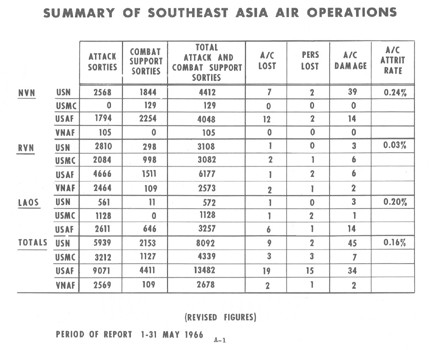
Appendix II
Equipment salvaged from Trawler
Weapons
One 12.7mm Anti-Aircraft Machine Gun
Three 7.62mm Machine Guns (Soviet SG-43)
One 57mm Recoilless Rifle (ChiCom Type 36)
One 7.92mm Machine Gun (MG-34, Mfg 1943)
Ammunition
Approximately 15 tons of ammunition including the following types:
120mm Mortar (1965 ChiCom Mfg)
12.7mm API (1965 ChiCom Mfg)
82mm Mortar
81mm Mortar (Apparently Mfg USA WWII)
75mm Recoilless Rifle
60mm Mortar
57mm Recoilless Rifle
12.7mm Small Arms
TNT Blocks
Blasting Caps
Pull Friction Igniters
Miscellaneous
Movie Projectors
Amplifiers
Speakers
Audio Transformers
Movie Films
Propaganda Material
MARKET TIME Statistical Summary, May 1966
1. Average number U.S. ships/craft on patrol during month:
DER |
MSO |
MSC |
WPB |
PCF |
|
TOTAL |
115 |
186 |
62 |
516 |
675 |
DAILY AVG |
4 |
6 |
2 |
17 |
21 |
2. Average number NVV ships/junks on patrol during month:
SEA FORCE |
COASTAL FORCE |
|
TOTAL |
789 |
5355 |
DAILY AVG |
25 |
173 |
3. U.S. Activity:
|
WOOD - |
DAY |
39,939 |
NIGHT |
29,626 |
|
WOOD - |
DAY |
9,230 |
NIGHT |
7,129 |
|
WOOD - |
DAY |
11,318 |
NIGHT |
5,528 |
4. VNN ACTIVITY:
SEARCH |
21,699 |
DETAINED |
629 people and 17 junks |
5. Remarks:
U.S. detained 87 junks and 542 people.
CONTRABAND CAPTURED BY U.S. AND VNN MARKET TIME UNITS
1 AUGUST 1965 - 31 MAY 1956
U.S. MARKET TIME FORCES
Weapons
23 Rifles
15 Carbines
1 12.7mm Anti-Aircraft Machine Gun
3 7.62mm Machine Gun
1 7.92mm Machine Gun
1 57mm Recoilless Rifle
Ammunition
Estimated 16 tons of ammunition and explosives including the following types:
120mm Mortar
82mm Mortar
81mm Mortar
60mm Mortar
75mm Recoilless Rifle
57mm Recoilless Rifle
7.9mm
7.62mm
12.7mm API
12.7mm
9mm
TNT Blocks
Pull Friction Igniters
Demolition Charges
Explosive Caps
34 Grenades
Supplies
34,100$ NVN
30,945$ VN
1.5 tons salt
1,650 kilos rice
20 5-gallon cans Calking Compound
1 portable radio
2 movie projectors
2 amplifiers
Miscellaneous speakers and audio transformers, movie films and propaganda material.
Miscellaneous tools, supplies, weapons parts, medicine and uniforms.
Junks
11 Junks Sunk
6 Junks Captured
VNN MARKET TIME FORCES - COASTAL GROUPS AND SEA PATROLS
Weapons
1 Sub-Machine Gun
1 Bayonet
168 Rif les
1 Automatic Rifle
Ammunition
13 Grenades
2 Potato Masher Grenades
3 Mines
186 Rounds 57mm Recoilless Rifle
368 Boxes of 12.7mm, 7.9mm, .30 Cal., & 9mm pistol ammunition
Supplies
1,598 Bottles Anti-Biotics
211 Packages miscellaneous medicine
1,000 kilos rice
1 junk-load of watermelons
10,900 kilos of salt
Junks
22 Junks Captured
20 Junks Sunk (Estimate)
VNN MARKET TIME FORCES - COASTAL GROUP LAND OPERATIONS
Weapons
15 Rifles
3 9mm Pistols
2 Sub-Machine Guns
1 Carbine
Ammunition
46 Grenades
2 Mines
2 Bars TNT
3 Rounds 81mm Mortar
2 Rounds 75mm Recoilless Rifle
8 Rounds 57mm Recoilless Rifle
1,000 Rounds Small Arms Ammunition
Supplies
220 Gallons Diesel Fuel
2 Battery Powered Megaphones
2,000 Kilos of Rice
1 Gas Mask
Miscellaneous uniforms, rucksacks, weapon magazines & tripods, and surgical tools.
Junks
3 Junks Captured
GAME WARDEN Statistical Summary, through May 1966
TOTAL FOR FIRST SEVEN WEEKS SINCE ACTIVATION OF PBRs
DATE |
INSPECTED |
BOARDED & |
TOTAL |
JUNKS |
PERSONS |
4/17 |
0 |
40 |
40 |
13 |
19 |
4/24 |
0 |
1,445 |
1,445 |
4 |
13 |
5/1 |
0 |
1,135 |
1,135 |
6 |
31 |
5/8 |
0 |
1,595 |
1,595 |
5 |
39 |
5/15 |
0 |
1,222 |
1,222 |
3 |
55 |
5/22* |
11 |
616 |
627 |
3 |
12 |
5/29 |
290 |
799 |
1,089 |
7 |
15 |
TOTAL |
301 |
6,852 |
7,153 |
41 |
184 |
5/30 |
65 |
134 |
199 |
0 |
0 |
5/31 |
0 |
221 |
221 |
2 |
7 |
GRAND |
|
|
|
|
|
* Reporting System Changed
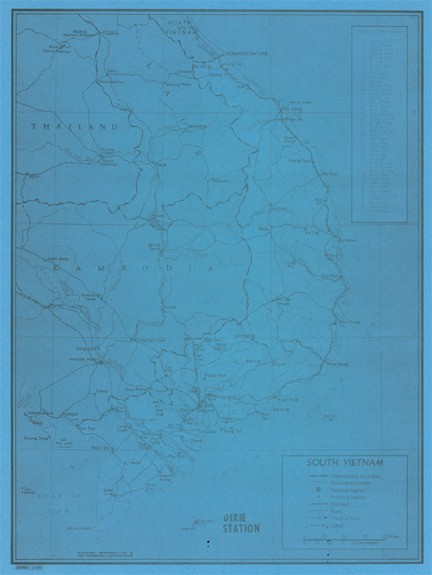
This document is part of the Vietnam Command Files, Operational Archives Branch, Naval Historical Center, Washington, D.C.


